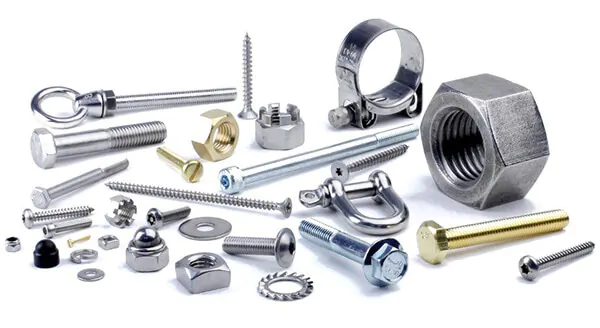How to make nuts and bolts?

Bolts and nuts manufacturers are very necessary in the manufacturing industry. They are widely used to fasten and connect different parts of a machine. Bolts and nuts manufacturers play a vital role in producing high-quality and durable fasteners that meet the industry standards. In this article, we will provide a step-by-step guide on how to make nuts and bolts with a heading.
Step 1: Material Selection
The first step in making nuts and bolts is selecting the appropriate materials. The most commonly used materials are steel, brass, and stainless steel. Steel is the preferred material for industrial applications due to its strength and durability. Brass is often used for decorative purposes as it has an attractive appearance. Stainless steel is used in corrosive environments as it is resistant to rust and corrosion.
Step 2: Heading
The heading process is used to form the head of the bolt or nut. The first step is to cut a length of wire from the chosen material. The wire is then fed into a heading machine, which applies pressure to the end of the wire. The pressure forces the metal to flow into a die, forming the shape of the head. The heading machine can form different types of heads, such as hexagonal, square, or round.
Step 3: Threading
After the heading process, the next step is to create the threads. The threading process involves rolling or cutting the threads onto the shank of the bolt or nut. Rolling is a faster process that creates a smoother finish, while cutting is slower but produces stronger threads. The threading process requires precision to ensure that the threads are the correct size and pitch.
Step 4: Heat Treatment
Heat treatment is an essential process that improves the strength and durability of the fastener. The bolts and nuts are heated to a specific temperature and then cooled slowly. This process can alter the properties of the metal, making it stronger and more resistant to wear and tear. The heat treatment process can also reduce the risk of brittle fracture and stress corrosion cracking.
Step 5: Finishing
The final step in making nuts and bolts is the finishing process. Quality control is an essential part of the fasteners and forgings production process to ensure that the final product meets the required specifications. This process involves removing any rough edges or burrs and adding a protective coating to the surface of the fastener. The protective coating can be a layer of paint, zinc plating, or a chemical coating. The coating protects the metal from corrosion and extends the life of the fastener.
There are many manufacturers of bolts and nuts around the world. Here are some well-known companies:
- Fastenal – a US-based company that manufactures and distributes industrial and construction supplies, including bolts and nuts.
- ITA Fasteners – a leading manufacturer of industrial fasteners in India, with a range of products including bolts, nuts, screws, and washers.
- Kova Fasteners – a manufacturer of high-quality bolts, nuts, screws, and other fasteners based in India.
- Portland Bolt – a US-based manufacturer of large bolts and custom fasteners for the construction, marine, and transportation industries.
- Baoji Sino-Swiss Titanium Co., Ltd – a Chinese company that specializes in the production of titanium fasteners, including bolts and nuts.
- UNBRAKO – a global leader in the manufacturing of high-strength industrial fasteners, including bolts, nuts, and screws.
- Dorman Products – a US-based supplier of automotive replacement parts, including bolts, nuts, and other fasteners.
- TR Fastenings – a UK-based company that manufactures and distributes industrial fasteners, including bolts, nuts, and screws, for a wide range of industries.
These are just a few examples of the many manufacturers of bolts and nuts around the world.
Conclusion:
In conclusion, the process of making nuts and bolts with a heading requires precision and expertise. Bolts and nuts manufacturers play a vital role in producing high-quality fasteners that meet the industry standards. The material selection, heading, threading, heat treatment, and finishing processes all contribute to the production of a durable and reliable fastener. By following these steps, you can create nuts and bolts that meet your specific requirements and ensure the safety and reliability of your machinery. Click here for more information





